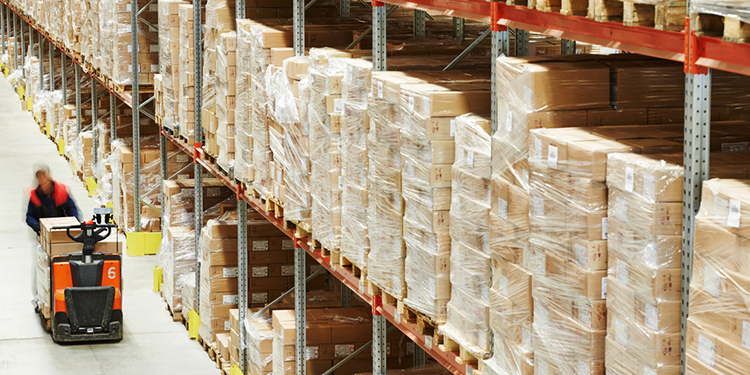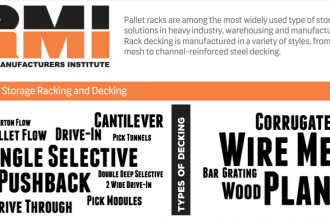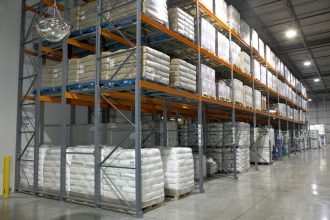Why Loads Should Be Unitized Prior To Placement In Storage Rack

Unitizing, or the act of aggregating one or more separate items (typically individual cases or products) into a single unit load, is typically done with a type of tie down to secure the load to the pallet prior to its placement in storage rack. Methods include stretch wrapping, shrink hoods, banding or strapping, depending on the type of load being handled. Yet, not every facility takes the time to ensure that each load is unitized before loading it into industrial steel pallet rack.
Thanks to the unstoppable force of gravity, that omission can significantly increase the safety risks to workers moving among and around the racks. That’s because loose boxes or products that have not been unitized are more likely to fall from an overhead storage position because they are unsecured, potentially hitting an employee—as well as causing damage to the product and possibly to the racking as well.
Whether that fall is caused by a forklift impact to the rack that jolts the item (or items) off the pallet, a nudge from a pallet being placed in the adjacent open storage position, movement during a seismic event, or a shift due to vibrations from passing fork truck traffic, items that aren’t unitized may tumble to the floor. Furthermore, products that haven’t been secured to the pallet are also at a higher risk of falling during rack loading and unloading, as well as during their transport throughout the facility.
The best practice to ensure stored items do not topple off of rack is to take a few extra minutes to inspect each load prior to storage to verify proper unitization. If the load is unsecured, unitize it with stretch wrap, a stretch hood or banding/strapping before transporting it to the storage bay. In high seismic areas especially, loads should be wrapped such that the pallet can be tilted to 20 degrees without the product falling off.
As an additional measure of protection against falling products, operations managers may choose to add accessories to their rack. These include shelf-style containment systems (drop-in, roll-in or snap-in crossbars; welded-wire rack decking; spaced wood boards; spaced metal channels, angles or plates; solid wood or perforated metal decking) that rest on the pallet support beams, and barriers—such as woven netting or rigid steel mesh—attached to the rack columns. Both types of accessories, however, only provide a secondary measure of protection compared to load unitization.
For more information about the different types of product fall prevention accessories, refer to Section 3.4 of RMI’s publication, “Considerations for the Planning and Use of Industrial Steel Storage Racks,” starting on page 19.


